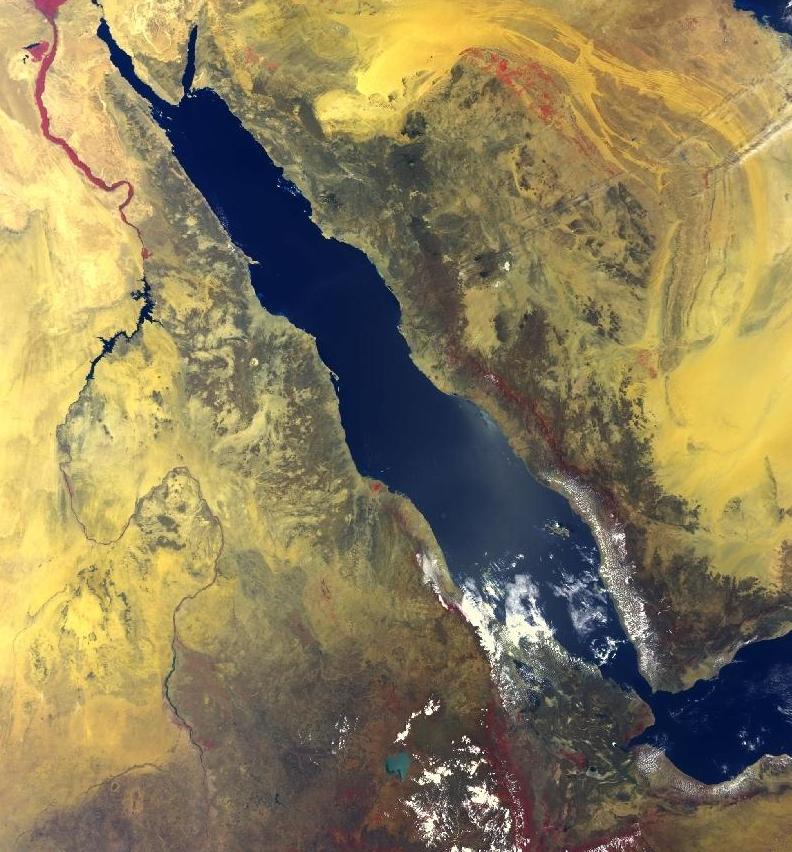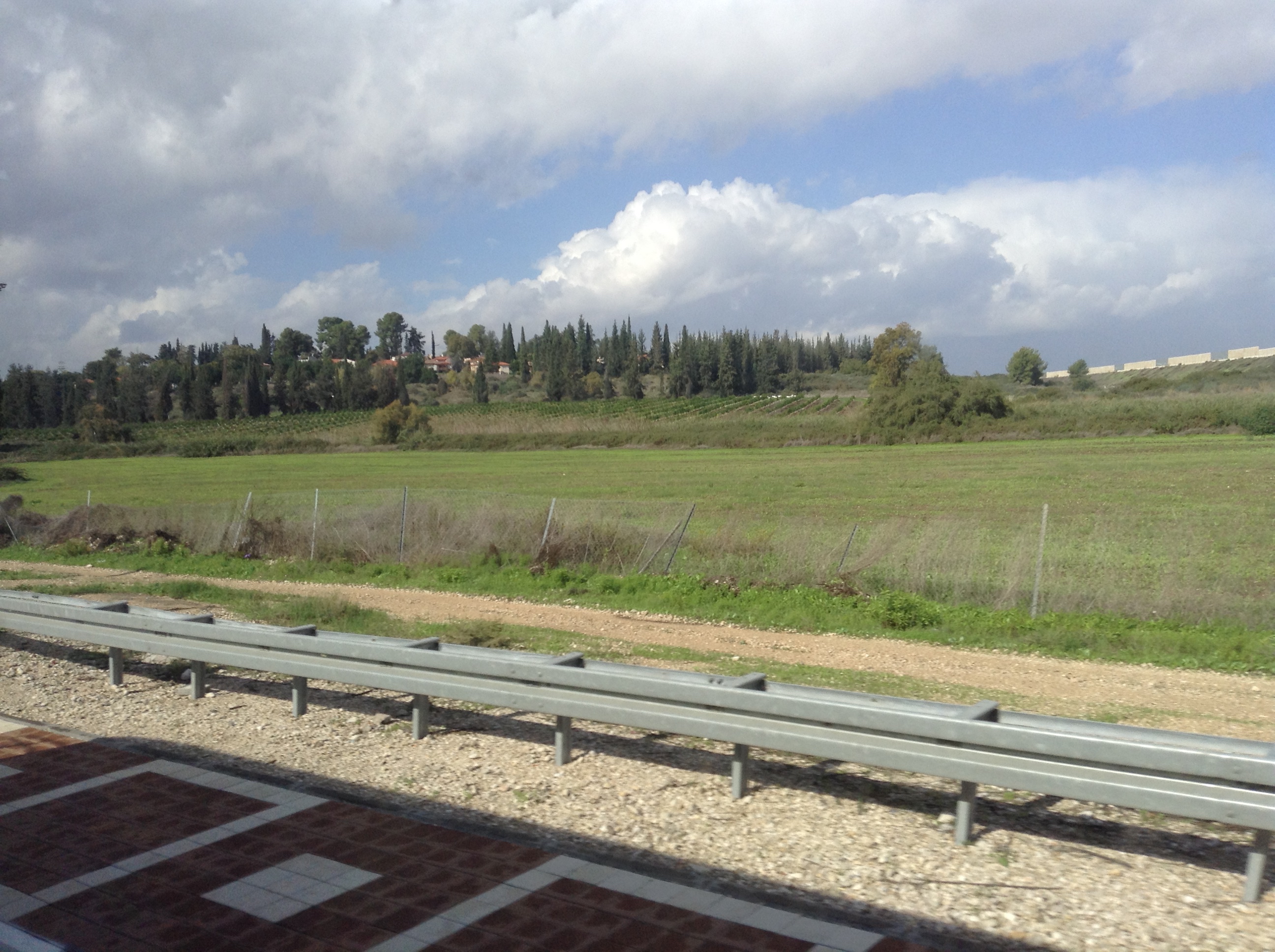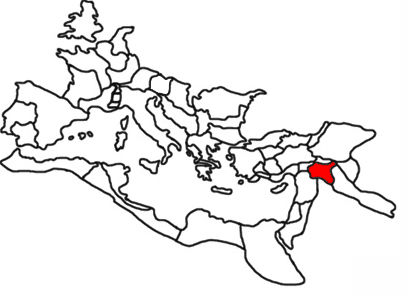|
Rehovot-in-the-Negev
Rehovot-in-the-Negev (English), from (רחובות בנגב, modern Hebrew name), derived from Khirbet Ruheibeh (Arabic, 'Ruheibeh Ruins'), is an archaeological site in the Wadi er-Ruheibeh area of the central Negev in Israel, containing the remains of an ancient town. Apparently founded in the first century CE by the Nabateans, it was a thriving city by the fifth century during the Byzantine period, when it grew to more than 10,000 inhabitants, thanks to its being on the Arabian incense trade route. By population, Rehovot-in-the-Negev was the second largest of the Byzantine-period "Negev towns". The city was repeatedly hit by earthquakes, the major 7th-century seismic event which destroyed Avdat also leading to the abandonment of this city. No biblical connection Easton's Bible Dictionary, published in 1893-97, tentatively associated the well dug by Isaac in Gerar and called by him Rehoboth (see ) with a site "in Wady er-Ruheibeh, some 20 miles south of Beersheba."'' ... [...More Info...] [...Related Items...] OR: [Wikipedia] [Google] [Baidu] |
Negev
The Negev ( ; ) or Naqab (), is a desert and semidesert region of southern Israel. The region's largest city and administrative capital is Beersheba (pop. ), in the north. At its southern end is the Gulf of Aqaba and the resort town, resort city and port of Eilat. It contains several development towns, including Dimona, Arad, Israel, Arad, and Mitzpe Ramon, as well as a number of small Negev Bedouin, Bedouin towns, including Rahat, Tel Sheva, and Lakiya. There are also several kibbutzim, including Revivim and Sde Boker; the latter became the home of Israel's first Prime Minister of Israel, prime minister, David Ben-Gurion, after his retirement from politics. Although historically part of a separate region (known during the Roman Empire, Roman period as Arabia Petraea), the Negev was added to the proposed area of Mandatory Palestine, of which large parts later became Israel, on 10 July 1922, having been conceded by British representative St John Philby "in Emirate of Transjordan, ... [...More Info...] [...Related Items...] OR: [Wikipedia] [Google] [Baidu] |
Yoram Tsafrir
Yoram Tsafrir (; 30 January 1938 – 23 November 2015) was an Israeli archaeologist. His research has included the Byzantine influence on ancient synagogues, demography of Palestine in the Byzantine period, mosaics at Horvat Berachot, excavations at Beit She'an, and excavations at Rehovot-in-the-Negev). A Professor Emeritus of the Institute of Archaeology at the Hebrew University of Jerusalem, he was a member of the Israel Academy of Sciences and Humanities. Biography Yoram Tsafrir was born in 1938 in Kfar Azar in Tel Aviv District. A graduate of the Hebrew University of Jerusalem in 1976, he became senior lecturer there in 1978, professor in 1987, and professor emeritus in 2006. From 1989 until 1992 he was Head of the Institute of Archaeology and was Director of the Jewish National and University Library from 2001 to 2007. He was also visiting Fellow at the Harvard University, Dumbarton Oaks, Washington DC. Yoram Tsafrir died on 23 November 2015 at a hospital in Jerusalem. ... [...More Info...] [...Related Items...] OR: [Wikipedia] [Google] [Baidu] |
Rehoboth (other)
Rehoboth may refer to: * Rehoboth (Bible), the name of three Biblical places Places Israel * Rehoboth, the conventional English name for Rehovot * Rehovot-in-the-Negev, archaeological site (Nabataean and Byzantine city) Namibia * Rehoboth, Namibia * Rehoboth Ratepayers' Association * Rehoboth (homeland), a Baster territory in South West Africa (present-day Namibia) United States * Rehoboth Beach, Delaware * Rehoboth, DeKalb County, Georgia * Rehoboth, Harris County, Georgia * Rehoboth (Eldorado, Maryland), listed on the National Register of Historic Places in Dorchester County, Maryland * Rehoboth, Massachusetts * Rehoboth, New Mexico * Rehoboth (Chappaqua, New York), listed on the National Register of Historic Places in Westchester County, New York * Rehoboth, Perry County, Ohio * Rehoboth, Seneca County, Ohio Other places * Rehoboth Christian College, Perth, Western Australia * Rehoboth Specialist Hospital, Nigeria Other uses * 145475 Rehoboth, an asteroid * Rehoboth Bay, Dela ... [...More Info...] [...Related Items...] OR: [Wikipedia] [Google] [Baidu] |
Incense Trade Route
The incense trade route was an ancient network of major land and sea trading routes linking the Mediterranean world with eastern and southern sources of incense, spices and other luxury goods, stretching from Mediterranean ports across the Levant and Egypt through Northeast Africa and Arabia to India and beyond. These routes collectively served as channels for the trading of goods such as Arabian frankincense and myrrh; Indian spices, precious stones, pearls, ebony, silk and fine textiles; and from the Horn of Africa, rare woods, feathers, animal skins, Somali frankincense, gold, and slaves. The incense land trade from South Arabia to the Mediterranean flourished between roughly the 3rd century BC and the 2nd century AD. Early history The Egyptians had traded in the Red Sea, importing spices, gold and exotic wood from the "Land of Punt" and from Arabia.Rawlinson 2001: 11–12 Indian goods were brought in Arabian and Indian vessels to Aden. Rawlinson identifies the long-debat ... [...More Info...] [...Related Items...] OR: [Wikipedia] [Google] [Baidu] |
Rehoboth (Bible)
Rehoboth () is the name of three biblical places. Rehoboth (well) According to ''Easton's Bible Dictionary'' (1893–97), "(a) well in Gerar dug by Isaac (), supposed to be in Wady er-Ruheibeh, about 32 km (20 miles) south of Beersheba." Isaac gave it the name Rehoboth, which means "open spaces". Isaac's servants had dug two wells and the herdsmen of Gerar quarrelled because of these two wells with Isaac's herdsmen. So when they dug the third well and there were no quarrels, Isaac named it Rehoboth, saying, "Now the Lord has given us room, and we will flourish in the land." Rehoboth by the river Rehoboth by the river was an ancient city from which came the Edomite king Saul in Genesis 36:37; ). Since "the River" in the Bible generally is used to mean the Euphrates, scholars have suggested either of two sites near the junction of the Khabur River and the Euphrates. However, this would be a place far outside the Edomite territory. The river mentioned could be a river in ... [...More Info...] [...Related Items...] OR: [Wikipedia] [Google] [Baidu] |
Southern District (Israel)
The Southern District (, ''Meḥoz HaDarom''; ) is one of Israel's Districts of Israel, six administrative districts, the largest in terms of land area but the most Population density, sparsely populated. It covers most of the Negev desert, as well as the Arabah, Arava valley. The population of the Southern District is 1,086,240 and its area is 14,185 km2. Its population is 79.66% Jewish and 12.72% Arab (mostly Muslim), with 7.62% of other origins. The district capital is Beersheba, while the largest city is Ashdod. Beersheba's dormitory towns of Omer, Israel, Omer, Meitar, and Lehavim are affluent on an Israel scale, while the development towns of Dimona, Sderot, Netivot, Ofakim, and Yeruham and the seven Negev Bedouin, Bedouin cities are lower on the socio-economic scale. [...More Info...] [...Related Items...] OR: [Wikipedia] [Google] [Baidu] |
Easton's Bible Dictionary
The ''Illustrated Bible Dictionary'', better known as ''Easton's Bible Dictionary'', is a reference work on topics related to the Christian Bible, compiled by Matthew George Easton. The first edition was published in 1893, and a revised edition was published the following year. The most popular edition, however, was the third, published by Thomas Nelson in 1897, three years after Easton's death. The last contains nearly 4,000 entries relating to the Bible. Many of the entries in ''Easton's'' are encyclopedic in nature, although there are also short dictionary-type entries. Because of its age, it is now a public domain resource. See also * Bauer lexicon ''Bauer's Lexicon'' (also ''Bauer Lexicon, Bauer's Greek Lexicon'', and ''Bauer, Arndt and Gingrich'') is among the most highly respected dictionaries of Biblical Greek. The producers of the German forerunner are Erwin Preuschen and Walter Bauer. ... * '' Smith's Bible Dictionary'', another popular 19th-century Bible dicti ... [...More Info...] [...Related Items...] OR: [Wikipedia] [Google] [Baidu] |
Former Populated Places In West Asia
A former is an object, such as a template, gauge or cutting die, which is used to form something such as a boat's hull. Typically, a former gives shape to a structure that may have complex curvature. A former may become an integral part of the finished structure, as in an aircraft fuselage, or it may be removable, being used in the construction process and then discarded or re-used. Aircraft formers Formers are used in the construction of aircraft fuselage, of which a typical fuselage has a series from the nose cone to the empennage, typically perpendicular to the longitudinal axis of the aircraft. The primary purpose of formers is to establish the shape of the fuselage and reduce the column length of stringers to prevent instability. Formers are typically attached to longerons, which support the skin of the aircraft. The "former-and-longeron" technique (also called stations and stringers) was adopted from boat construction, and was typical of light aircraft built until t ... [...More Info...] [...Related Items...] OR: [Wikipedia] [Google] [Baidu] |
7th-century Disestablishments In The Byzantine Empire
The 7th century is the period from 601 through 700 in accordance with the Julian calendar in the Christian Era. The spread of Islam and the Muslim conquests began with the unification of Arabia by the Islamic prophet Muhammad starting in 622. After Muhammad's death in 632, Islam expanded beyond the Arabian Peninsula under the Rashidun Caliphate (632–661) and the Umayyad Caliphate (661–750). The Muslim conquest of Persia in the 7th century led to the downfall of the Sasanian Empire. Also conquered during the 7th century were Syria, Palestine, Armenia, Egypt, and North Africa. The Byzantine Empire suffered setbacks during the rapid expansion of the Caliphate and a mass incursion of Slavs in the Balkans which reduced its territorial limits. The decisive victory at the Siege of Constantinople in the 670s led the empire to retain Asia Minor, which ensured the existence of the empire. In the Iberian Peninsula, the 7th century was known as the ''Siglo de Concilios'' (century o ... [...More Info...] [...Related Items...] OR: [Wikipedia] [Google] [Baidu] |
Populated Places Established In The 1st Century
Population is a set of humans or other organisms in a given region or area. Governments conduct a census to quantify the resident population size within a given jurisdiction. The term is also applied to non-human animals, microorganisms, and plants, and has specific uses within such fields as ecology and genetics. Etymology The word ''population'' is derived from the Late Latin ''populatio'' (a people, a multitude), which itself is derived from the Latin word ''populus'' (a people). Use of the term Social sciences In sociology and population geography, population refers to a group of human beings with some predefined feature in common, such as location, race, ethnicity, nationality, or religion. Ecology In ecology, a population is a group of organisms of the same species which inhabit the same geographical area and are capable of interbreeding. The area of a sexual population is the area where interbreeding is possible between any opposite-sex pair within the a ... [...More Info...] [...Related Items...] OR: [Wikipedia] [Google] [Baidu] |
Nabataean Architecture
Nabatean architecture (Arabic: اَلْعِمَارَةُ النَّبَطِيَّةُ; al-ʿimarah al-nabatiyyah) refers to the building traditions of the Nabateans ( /ˌnæbəˈtiːənz/; Nabataean Aramaic: 𐢕𐢃𐢋𐢈 ''Nabāṭū''; Arabic: ٱلْأَنْبَاط ''al-ʾAnbāṭ''; compare Akkadian: 𒈾𒁀𒌅 ''Nabātu''; Ancient Greek: Ναβαταῖος; Latin: ''Nabataeus''), an ancient Arab people who inhabited northern Arabia and the southern Levant. Their settlements—most prominently the assumed capital city of Raqmu (present-day Petra, Jordan)—gave the name ''Nabatene'' (Ancient Greek: Ναβατηνή, ''Nabatēnḗ'') to the Arabian borderland that stretched from the Euphrates to the Red Sea. Their architectural style is notable for its temples and tombs, most famously the ones found in Petra. The style appears to be a mix of Mesopotamian, Phoenician, Hellenistic, and South Arabian influences modified to suit the Arab architectural taste. Petra, the ca ... [...More Info...] [...Related Items...] OR: [Wikipedia] [Google] [Baidu] |
Nabataean Sites In Israel
The Nabataeans or Nabateans (; Nabataean Aramaic: , , vocalized as ) were an ancient Arab people who inhabited northern Arabia and the southern Levant. Their settlements—most prominently the assumed capital city of Raqmu (present-day Petra, Jordan)—gave the name ''Nabatene'' () to the Arabian borderland that stretched from the Euphrates to the Red Sea. The Nabateans emerged as a distinct civilization and political entity between the 4th and 2nd centuries BC, with their kingdom centered around a loosely controlled trading network that brought considerable wealth and influence across the ancient world. Described as fiercely independent by contemporary Greco-Roman accounts, the Nabataeans were annexed into the Roman Empire by Emperor Trajan in 106 AD. Nabataeans' individual culture, easily identified by their characteristic finely potted painted ceramics, was adopted into the larger Greco-Roman culture. They converted to Christianity during the Byzantine period. They ha ... [...More Info...] [...Related Items...] OR: [Wikipedia] [Google] [Baidu] |





